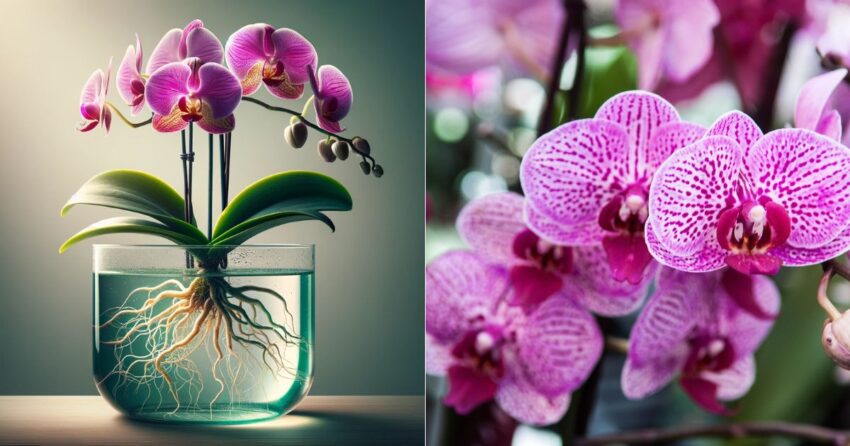Orchids have long been a symbol of elegance, grace, and beauty. With their exotic appearance and captivating colors, they are often considered the crown jewels of the plant world. While traditionally grown in soil, many plant enthusiasts have begun experimenting with an alternative method: growing orchids in water. This unconventional approach not only adds a unique touch to your home decor but also simplifies orchid care for those who may be intimidated by traditional soil-based cultivation. In this article, we will explore the art of growing orchids in water, step by step.
Choosing the Right Orchid
Before embarking on your journey to grow orchids in water, it’s crucial to choose the right type of orchid. Some orchid varieties are better suited to this method than others. Epiphytic orchids, such as Phalaenopsis and Dendrobium, are ideal candidates. Their aerial roots naturally seek moisture and nutrients from the air, making them more adaptable to a water-based environment.
Materials You’ll Need
- Orchid of your choice
- Glass or transparent container with a lid or cover
- Distilled or rainwater
- Hydroponic nutrients
- Small stones or pebbles
- Charcoal pieces
- Perlite or sphagnum moss (optional)
Step-by-Step Guide to Growing Orchids in Water
- Choose a Suitable Container: Select a transparent container that allows you to monitor the water level and root growth easily. Make sure it has a tight-fitting lid or cover to create a humid environment.
- Prepare the Container: Place a layer of small stones or pebbles at the bottom of the container to create a drainage layer. On top of this, add a layer of charcoal pieces to keep the water fresh and prevent odor.
- Add Water: Pour distilled or rainwater into the container until the bottom layer of stones is partially submerged. Ensure that the water level is below the roots of the orchid when it’s placed in the container.
- Place the Orchid: Gently position the orchid in the container, ensuring that its roots are in contact with the water. It’s important not to submerge the entire plant; only the roots should be in water.
- Create a Humid Environment: Close the container with its lid or cover to create a humid microclimate. This mimics the natural conditions orchids prefer.
- Monitor Water Levels: Regularly check the water level in the container. Maintain it by adding more distilled or rainwater when necessary. Be cautious not to overfill.
- Provide Nutrients: Every two to four weeks, add a diluted hydroponic nutrient solution to the water. Follow the manufacturer’s instructions for proper dosage.
- Keep the Orchid in Ideal Conditions: Place the container in a location with indirect sunlight, as orchids require filtered light rather than direct sun exposure. Maintain a consistent temperature and humidity level.
- Prune and Care: Trim away any dead or decaying roots or leaves as needed. Keep an eye out for any signs of disease or pests.
- Enjoy Your Blooming Orchid: With time and care, your orchid should thrive in its water-based environment and reward you with beautiful blooms.
Conclusion
Growing orchids in water is a captivating and unconventional way to bring these stunning flowers into your home. While it may seem unconventional at first, it can be a rewarding and visually appealing addition to your interior decor. Remember that patience and attention to detail are key to successfully growing orchids in water. With the right choice of orchid, container, and care, you can enjoy the allure of these graceful blooms and add a touch of exotic beauty to your home. Give it a try, and you might discover a new passion for orchid cultivation like never before.

Read also: 15 Brilliant Uses For Eggshells In The Home and Garden

